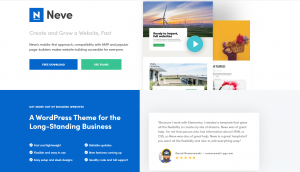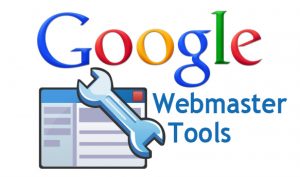Sometimes, Content Marketing For Nonprofits may feel daunting for marketers. One thing is for sure: Nonprofits may not have the big marketing budgets of large corporations, but that doesn’t mean they can’t implement powerful content marketing strategies. Realistically, nonprofits that embrace content marketing effectively can drive greater awareness, engagement, and donations.
Besides being one of the most affordable forms of digital marketing, content marketing is long-lasting and can constantly be repurposed for different platforms. For beginners, content marketing is a type of marketing that uses content to educate, engage, and inspire a target audience. The content can be long or short, visual or verbal — whatever works best to achieve your marketing goals.
That definition is intentionally broad. Content marketing involves a vast range of formats and approaches – including content marketing strategies that are tailored for nonprofits. It can cover videos, podcasts, short blog posts, email marketing, landing pages, magazines, longreads, eBooks, and games. Still, it even extends to social media platforms like LinkedIn and Facebook.
This is where longer pieces of content can be repackaged as brief clips, quotes, and extracts. By all means, the best content marketing aims to help the reader. It persuades consumers (or new donors) by explaining, educating, and entertaining rather than aggressively pursuing conversions. In this guide, we’ll look at how content fits into the digital marketing strategy for nonprofits.
The Surprising Prevalence Driven By Experts In Content Marketing For Nonprofits
Content Marketing has risen sharply among nonprofits in recent years. Surprisingly, 70% of nonprofits are currently utilizing content marketing. However, there may be some misunderstanding about an effective content marketing strategy. Of course, most nonprofits have traditionally created communications like brochures and direct mailings. But this works differently for each nonprofit business.
It’s important to realize that the same strategies that work for a new software platform with masses of venture capital will not be suitable for a nonprofit organization with a tight budget and complex goals. Nonprofit content marketing is unique, and it should focus on individual brands. By all means, proper content marketing involves creating, distributing, and optimizing digital content.
The main difference for nonprofit marketing teams is right there in the name: it’s not for profit. While other businesses might chase growth or sales value, your organization’s mission differs. Your job as a nonprofit content marketer is often to find, engage, and retain supporters. And you can’t always offer any immediate benefits to supporters, only the warm glow that comes from doing good.
Support can come in many forms, from fundraising and advocacy to volunteering and letter-writing campaigns. Most of these ways of showing support are a more significant commitment than simply making a purchase, so you have to work correspondingly harder to engage your audience. All nonprofit professionals know how difficult it can be to get people’s attention, let alone hold on to it.
The Most Common Challenges Nonprofits Face With Content Marketing
Nonprofits consistently cite limited time and budgets as the primary obstacles to content marketing success. Nonprofits are constantly under pressure to do more with less. Limited resources mean you must focus on the most effective publishing platforms and distribution channels instead of testing a scattershot approach. But please note: “effective” doesn’t mean “conventional.”
Trying new formats and being creative can often pay off. For nonprofits, impactful content usually means crafting and sharing compelling stories about their mission. Storytelling that educates inspires, and tugs at heartstrings can engage audiences emotionally. As mentioned, most nonprofit marketing teams are often stretched thin and may lack proper training in content strategy.
More education and commitment to resources are still needed in many nonprofit organizations. Per the Content Marketing Institute, only 15% of nonprofits have a documented content strategy. Declining direct mail effectiveness poses additional challenges for organizations reliant on traditional tactics. Every nonprofit will have a different approach to its content marketing strategy.
Regarding digital marketing for nonprofits, a strategic approach is essential to overcome these challenges. This requires coordinating content efforts across multiple online channels and platforms. By focusing on quality over quantity, you may eventually be able to build the capacity for more content. However, there are still other challenges that nonprofit businesses need to overcome.
Other challenges include:
- Limited in-house expertise: Many nonprofits lack staff skilled in content strategy, creation, and optimization. With scarce resources, developing and retaining this talent is difficult.
- Difficulty quantifying ROI: Calculating content marketing return on investment can be nebulous for nonprofits focused on mission over monetary goals. Gradual brand recognition or social following increases are hard to attribute directly to content efforts.
- Legal and governance processes: Nonprofits often face more legal red tape related to fundraising, privacy policies, accessibility standards, and board approvals that can impede swift content publication.
- Staff burnout: With small teams taking on multiple responsibilities, content creation frequently falls lower on priority lists as staff tackle immediate needs. Continual production of quality content at volume is unsustainable.
- Social platform algorithms: Nonprofits have little control over opaque algorithms on sites like Facebook that determine content visibility and engagement. Overreliance on third-party channels is risky.
- Measuring impact: While commercial businesses can track content performance through sales, nonprofits must rely on softer metrics like shares and followers to gauge impact. This makes optimization more difficult.
To address these challenges, nonprofits should focus on repurposing content, mastering one platform at a time, collaborating with industry partners on shared content, and diligently collecting audience feedback and metrics to refine their strategy. A measured approach and persistence are crucial to overcoming obstacles.
The 3 Pillars For A Successful Nonprofit Marketing Campaign Strategy
Realistically, most nonprofits usually look to their board to create a plan, which is often a grave mistake. The board does not have (a) the requisite broad market intelligence, (b) the ability to collect impartial data from those the organization serves (the customers), and (c) a comprehensive understanding of the organization’s capacity. Thus, the campaign is bound to fail from the start.
As a rule of thumb, it is the board’s place to ordain strategy, not create it. In most cases, the CEO-executive director’s (ED) job is to bring potential strategies before the board for consideration. Then, the panel can debate, refine, select, challenge, and ultimately determine the method best for the company’s mission and future. To do this well, the CEO-ED must use an outside expert.
On that note, he or she cannot use an employee because the nature of the employer-employee relationship does not provide the neutrality required to tackle the three pillars with integrity. According to a particular guideline article by FastCompany, there are some notable 3 pillars of a successful nonprofit strategy that the overall campaign is built upon. These pillars are as follows:
Target Market
Market conditions play a role in the success of every organization. For example, it is quite a different game to grow an organization when the market is expanding than when it is contracting. Rarely are markets so black and white. They are often nuanced with challenges and circumstances that rely on specific conditions and present unique opportunities. That is why you need an expert who can assess the market and present the options in a way that makes it easy for the board to understand, digest, and debate. An independent view ensures the whole picture is submitted without an organization-centric bias.
Potential Customers
The two fundamental questions to answer are: Who are our customers? How are we doing at serving them? For most organizations, these are more complex questions to answer than they first appear. For example, it is customary to learn that you have several essential sets of customers; among them, some are happy, and others are not; some feel neutral, and others are detached. It’s also customary to learn that you are meeting some needs, missing some, and could be doing better with others. It takes neutrality to interact with your customers, gather their candid input, and put it together in a framework that accurately describes how your organization is perceived by those it serves, for better or worse.
Business Capacity
Deep knowledge of your customers and the market is not enough. It would be best if you got an assessment of whether or not your operation has the money to rise to opportunities and meet challenges successfully. To do this, you must evaluate its ability to act and innovate. This requires a hard look at the culture, functions, and roles to design and deliver value successfully. Everyone inside the organization lacks the independence to assess capacity without bias accurately. Deficiencies and assets must be identified in talent, resources, responsiveness, systems, and data.
As you can see, the three pillars that every successful nonprofit strategy relies upon are market, customers, and capacity. The quality of your plan rests upon the caliber of these three pillars. Bring in an expert under the direction of the CEO to do the necessary work. Examine these three areas and present the findings to the board for review. You’ll be glad you did, as will the people you serve.
What You Must Include In Your Strategic Content Marketing For Nonprofits
One of the biggest challenges for content marketers is proving the value of what they do. That challenge is even more significant in a nonprofit with a tight budget. As such, we recommend that you set up and measure the impact of your work. You can’t do everything, and your strategy should emphasize what you’re not doing as much as what you are doing. Learn a few tips from this video guide:
With the growth of content marketing among nonprofits, there has been an increase in dedicated staff overseeing these efforts. A Content Marketing Institute study found that 69% of nonprofits have someone in charge of content marketing strategy. However, in some organizations, there may be confusion between traditional marketing communications and integrated content marketing.
You can create valuable content in many ways to help your nonprofit stand out. But whatever format you choose, you’ll need a fast, flexible digital publishing platform to support your work. For example, with the help of Shorthand, you can start creating your next project with ease. Create and share beautiful web content for free. No code, no credit card, and no commitment required.
On the one hand, every nonprofit is different. On the other hand, as a nonprofit content marketer, you’ll already know what makes your organization unique — its strengths and limitations. So, we’re not going to get into specific tactics here. However, we can say a few things on the strategic level. In particular, we are going to have a look at what every nonprofit content strategy needs…
1. Your strategy and mission link
You should be able to explain the purpose of every last piece of content. One way to keep your goals in sight is to write a mission statement to connect your content to your organization’s mission. Remember, at this level, we’re talking about strategic goals, not the nitty-gritty tactics. It would be best to link your content strategy to your broader marketing and messaging goals.
2. Your strategic plan for research
Content creation is like an iceberg: the stuff published is just a tiny percentage of the work. A vast mass of research lurks beneath the waters. Your strategy should include a plan to research new content formats, story ideas, digital marketing developments, and industry trends.
3. Your target audience demographics
When you know who you’re writing for, everything else falls into place. Invest some time into understanding your audience — and update your knowledge regularly. Think about who they are, what content they enjoy, and where they find it. Make sure you back up your ideas with complex data: content interactions, web analytics, and reader surveys are good places to start.
4. A list of goals, OKRs, or KPIs
To remind you, Objectives, Results, and Key Performance Indicators are vital elements. The specific acronym your team uses is less important than having some way to measure results. A comprehensive content strategy will lay out your basic expectations, set achievable goals, and choose a metric for success.
5. An assessment of content channels
There are a million ways to publish content, and someone invents a new method daily. So you can’t cover everything. Use your content strategy to set priorities and explain why your chosen channels are essential. The ideal form of content fits your resources, appeals to your target audience, and gives you space to make something original. Some tools include search engine-optimized guides, landing pages for marketing campaigns, reports, social media threads on Twitter or LinkedIn, webinars, infographics, email marketing, podcasts, and videos.
6. An assessment of your resources
You should include a realistic assessment of what you need to create content — including time, technology platforms, and budgets. Most nonprofit content teams have fewer than five people. Still, you can do a lot by outsourcing to freelancers or digital agencies and investing in digital content platforms that allow you to operate at scale.
7. Workflows for each content type
Once you have your audience, goals, resources, and content channels in mind, that’s all the information you need to design a workflow. A well-documented workflow makes meeting deadlines easier, bringing new people on board, and keeping consistent quality across your content.
8. A content calendar
Sure, a content calendar is critical to your nonprofit content marketing. Like workflows, a content calendar — otherwise known as an editorial calendar — might seem like yet more admin, but it can make your life much easier. Plan at least a quarter to spread out deadlines and keep up a steady flow of new content. With your calendar planned out, you’ll have the mental space to produce time-sensitive content (such as emergency response campaigns) on the fly.
9. A plan for distribution
Content is no good unless someone sees it. So, how will your content get out there? At this point, it’s worth looking back at your list of content channels. Good content can usually be reshared and repackaged across several platforms. A distribution plan should be in place for each piece of content before it gets anywhere near publication.
10. A measurement and reporting system
Regardless of your tools, measuring and reporting on your content will help you show how it supports strategic goals. That data also feeds back into content production itself. Over time, you’ll see which formats, topics, and distribution channels work best. The specific method of reporting varies depending on the types of content you are producing. For some types of content, data from Google Analytics will suffice. You may track social media shares, downloads, or more sophisticated funnels for other channels using analytics platforms like Mixpanel.
The Most Notable Successful Nonprofit Content Marketing Examples
Here are some inspirational real-world examples of nonprofits executing content marketing strategies effectively:
(a). The Shelter Pet Project
This collaborative initiative to promote pet adoption takes advantage of endearing and emotionally heartwarming photos and videos of adoptable pets in shelters. This type of visual content tugs at the heartstrings of animal lovers and has helped expand public awareness and conversation around shelter pet adoption.
(b). The Girl Effect
This nonprofit focuses on the health, education, and empowerment of adolescent girls worldwide and creates tailored multimedia content to educate, inspire, and motivate its target youth audience. Short films, digital content, interactive media, and mobile apps provide information and encouragement to girls in an engaging format.
(c). Make-A-Wish Foundation
By creating and widely sharing touching stories and photographs of children’s wishes being granted, the Make-A-Wish Foundation engages audiences. It attracts public support for its mission to grant life-changing wishes for children with critical illnesses. Compelling narratives and storytelling help humanize the cause and connect donors and volunteers emotionally.
(d). Charity: Water
This nonprofit provides clean drinking water to those in need around the world. With an engaging social media presence and content anchored around transparency, they give donors glimpses of their dollars’ actual impact. Creative content like custom donor birthday e-cards helps drive emotional connections.
(e). St. Jude Children’s Research Hospital
St. Jude creates compelling content that tells the stories of brave children benefiting from their life-saving research and treatment. This content educates audiences about childhood cancer while tugging at heartstrings. Email newsletters, videos, and social posts build strong engagement.
How The Nonprofit Content Marketing Business Future Looks Like
Looking into the future, as the Internet gets busier, standards for content are getting higher. It would help if you had something extraordinary to stand out. Every element of your content is essential, from the research process to the planning stage and content copywriting process to your donation campaign webpage’s design and interactive features. They all merge to drive results.
As nonprofit content marketing matures, the hope is to see more nonprofits develop and commit to documented strategies that outline content goals, creation processes, distribution methods, and metrics for success. Following the lead of innovative nonprofits with a strategic approach can help take efforts to the next level. Sure, content marketing presents some unique challenges.
However, those who invest the time and effort into understanding their audiences, crafting compelling stories, and delivering consistent content across channels will surely reap the benefits of greater awareness and donor engagement. Remember, if creating content seems overwhelming, then pause for a minute. Step back. Do less. Producing one brilliant piece of content is effective.
It works better than ten lackluster projects that are never really finished. You work at a nonprofit, not a daily newspaper. It’s OK if you don’t have something to publish every single day. If you produce great work, you can make a case for more investment within your organization. Flawless content will attract more attention from potential donors and partners, giving you more ideas.
Some Answers To Frequently Asked Questions
1. How can nonprofits with limited resources effectively implement content marketing?
The keys are repurposing existing content as much as possible, focusing efforts on mastering one primary channel, and curating relevant content from industry resources rather than trying to create original content across all channels. Careful planning and strategic implementation are vital.
2. Why is there a discrepancy between the nonprofits using content marketing and those with a documented plan?
Often, nonprofits expand their traditional marketing techniques, communication channels, and collateral into digital forms without necessarily taking an integrated, strategic approach to content marketing across channels. There also appears to be some misunderstanding regarding what constitutes a comprehensive content marketing strategy.
3. How can nonprofits ensure their content marketing efforts are impactful and resonate with their audience?
Impactful nonprofit content marketing starts with sharing compelling stories that connect at an emotional level. Consistency is vital — nonprofits must continually publish and distribute content tailored to their audience segments’ needs. Listening to audience feedback and monitoring engagement metrics will ensure content resonates.






